In the fast-evolving world of product development, prototype plastic injection molds have emerged as a cornerstone for transforming innovative concepts into tangible, testable parts.
These molds offer a practical bridge between initial design and full-scale production, allowing engineers and designers to evaluate functionality, refine aesthetics, and address potential flaws with minimal risk and investment.
Unlike their production counterparts, prototype molds prioritize speed and flexibility, making them indispensable for accelerating time-to-market while ensuring quality.
This article explores the technical intricacies of prototype plastic injection molds, delving into their benefits, creation process, applications, and inherent challenges, providing a comprehensive overview for professionals navigating the prototyping landscape.
What Is Prototype Plastic Injection Mold?
Prototype injection molds are essential for turning concepts into tangible products through testing and refinement. They create physical plastic prototypes or samples, enabling thorough testing and necessary adjustments before mass production.
The same types of plastics used in production molds can also be utilized for prototype injection molding, ensuring that the prototypes closely mimic the final product. This stage is pivotal in product development, as it allows for design verification, error correction, and quality assurance.
While 3D printed parts can be beneficial for rapid prototyping, they often fall short in terms of strength, material properties, and surface quality compared to injection molded prototypes.
This limitation means that 3D printing cannot fully replicate the functionality of injection-molded products, particularly when dealing with complex designs and manufacturing challenges.
Prototype injection molding is a process where plastic materials are injected into a mold cavity, cooled, and solidified to form a prototype injection mold for injection molding prototypes. This method enables the creation of realistic prototypes, which can be critical for validating complex or innovative product designs.
Designers and engineers can test these prototypes to identify and rectify any flaws, ensuring that the final product meets all specifications and quality standards. Plastic injection molding is a key technique in this process.
The significance of prototype injection molds cannot be overstated. They facilitate rapid iterations and modifications, making them indispensable for projects with many unknowns or complex designs.
Using these molds allows project managers and engineers to ensure each prototype aligns with precise design specifications, ultimately producing a more refined and reliable final product.
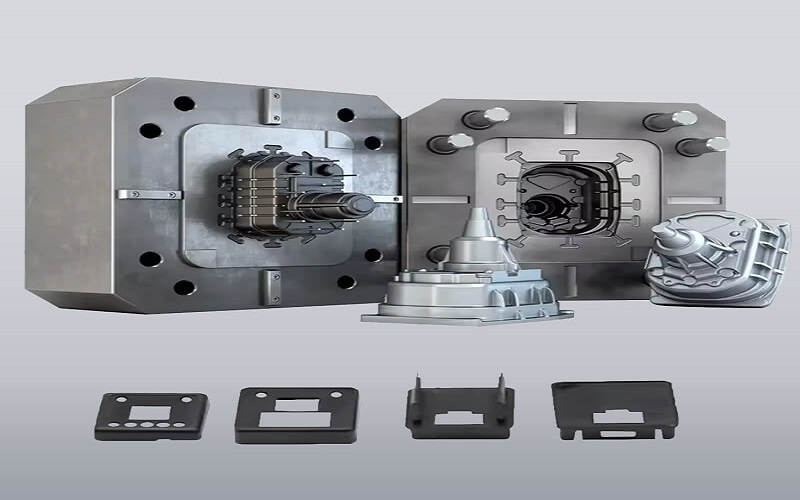
Key Differences Between Prototype Mold and Production Molds
The primary difference between prototype molds and production molds lies in their purpose and construction.
Prototype molds focus on design testing and validation, while production molds aim for consistency and high-volume output. This distinction is crucial for understanding why and when to use each type of mold.
Prototype molds are generally made from softer, less expensive materials like aluminum, which are suitable for producing a limited number of parts.
In contrast, production molds are crafted from durable, hardened steel to withstand the rigors of mass production, often producing tens of thousands to millions of parts.
Production injection molding, compared to other manufacturing methods like machining and 3D printing, is cost-effective for producing larger quantities of parts, making it essential for full-scale production runs.
Due to their construction, production molds are significantly more expensive and time-consuming to manufacture.
Another key difference is the level of precision and durability. Production molds are engineered for high precision and uniformity, ensuring consistent quality across large production runs.
Prototype molds, while adequate for initial testing, may lack the advanced cooling systems and multi-cavity designs found in production molds, leading to potential variations in part quality.
This makes prototype molds ideal for small batches and iterative testing but requires a transition to production molds for large-scale manufacturing.
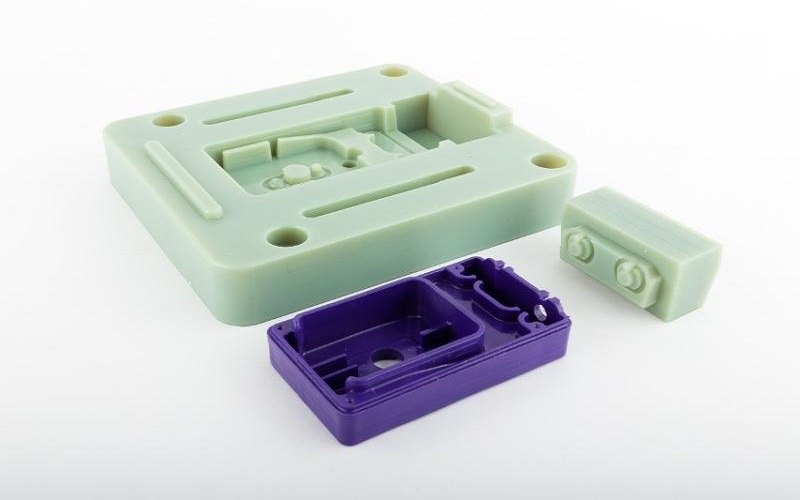
Benefits of Using Prototype To Production Injection Molds
Prototype injection molds offer numerous advantages, significantly streamlining the product development process.
These molds play an indispensable role during the prototyping phase, enabling developers to create genuine injection-molded prototypes before mass production begins.
Common challenges associated with injection molded parts include surface and appearance imperfections, uneven wall thickness, and deviations in critical dimensions.
By utilizing prototype injection molds, developers can effectively mitigate design risks, accelerate time-to-market, and ensure high-quality outcomes.
Design Verification and Validation
The primary purpose of developing prototypes is to test and refine designs before full-scale manufacturing. Prototype injection molds and prototype tooling enable early identification of design flaws, enhancing validation before mass production.
Conducting mold flow analysis can identify potential issues such as air traps and flow lines before physical production begins, optimizing the design by predicting how molten plastic will flow within the mold. This analysis ensures that parts with functional features requiring close tolerances will meet necessary specifications.
Cost-Effective Development
Rapid prototyping injection molds are considerably less expensive compared to traditional injection molds. Using prototype molds significantly reduces initial production costs, providing a more cost-effective approach to rapid prototype injection molding.
Additionally, prototyping solutions often enable design adjustments suggested by experts, ultimately lowering production costs. This flexibility in the early stages can save substantial resources and ensure that the final design is both functional and manufacturable.
Speed to Market
Prototype injection molds drastically reduce the time required to bring a product from concept to market.
These molds enable rapid injection molding and quick iterations, allowing developers to respond swiftly to market demands and changes.
Shortening the cycle time enables faster market testing and readiness, ensuring products reach consumers ahead of competitors.
This speed and agility are crucial in maintaining a competitive edge in fast-paced industries.
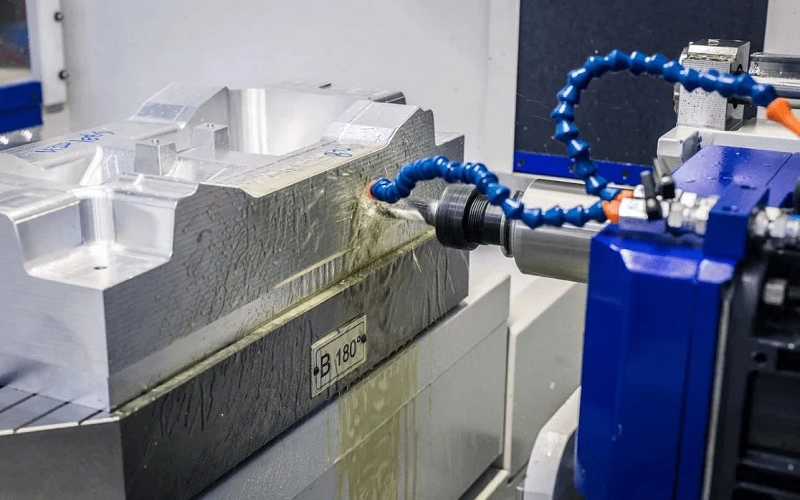
The Process of Creating Prototype Plastic Mold
Creating prototype plastic injection molds is a structured process that balances precision, speed, and cost to produce functional parts for testing and validation.
The process begins with injection mold design, followed by material selection, manufacturing, and assembly and testing, including production injection mold techniques.
Each of these steps is critical in ensuring that the final prototype meets the desired specifications and quality standards.
Design the Part and Mold (CAD Modeling)
The process begins with designing the plastic part and its corresponding mold using Computer-Aided Design (CAD) software.
This step is foundational, as it defines the geometry, dimensions, and tolerances of the part. Engineers create a 3D model of the part, considering factors like wall thickness, draft angles, and parting lines to ensure moldability.
Next, the mold design is developed, typically as a two-part system (core and cavity) with a single cavity for simplicity in prototyping.
Basic features like gates and runners are included, though complex cooling systems are often minimized to save time. CAD tools also allow for simulations to predict potential issues like air traps or uneven filling, enabling adjustments before fabrication begins.
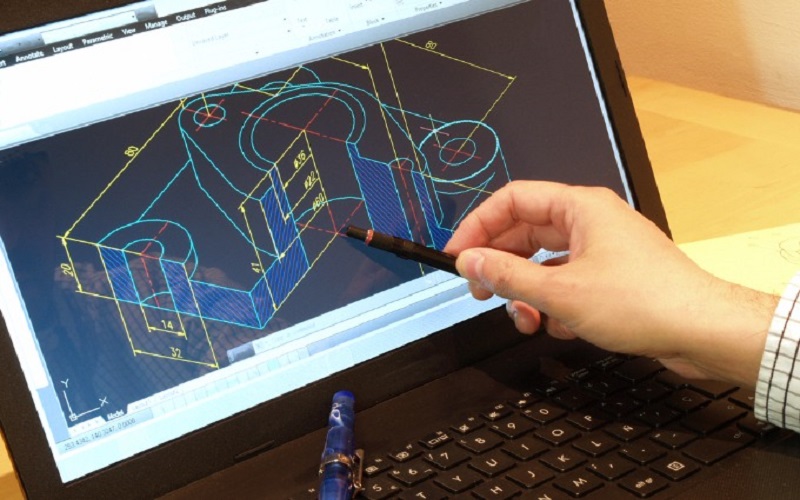
Material Selection Based On Project Needs
Choosing the right material for the prototype injection mold is critical and depends on the project’s goals, budget, and expected number of parts.
Unlike production molds, which use hardened steel for durability, prototype molds often employ softer, more affordable materials like aluminum or mild steel.
is popular due to its ease of machining, lower cost, and sufficient strength for producing dozens to hundreds of parts.
The plastic resin for the parts is also selected at this stage, matching the injection molding materials intended for the final product (e.g., ABS, polypropylene) to ensure accurate testing.
Material choice balances the need for quick fabrication with the mold’s ability to withstand the injection process for the planned prototype run.
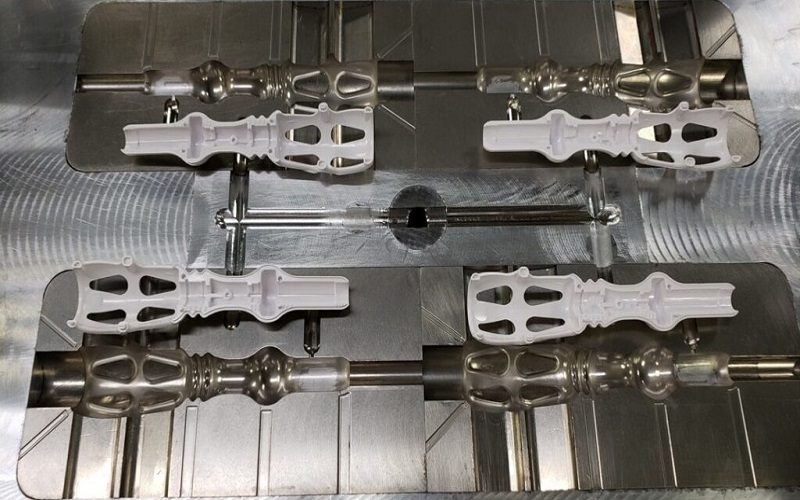
Manufacturing Process for Prototype Injection Molds
Once the design is finalized and materials are chosen, the mold is fabricated, typically using CNC (Computer Numerical Control) machining for precision and speed.
The process starts by cutting the mold components—core, cavity, and base—from the selected material. CNC machines follow the CAD model to mill out the part geometry, gates, and runners.
For simpler or experimental molds, 3D printing may be used, though it’s less common due to durability limitations. After machining, the components are polished to remove burrs and ensure smooth surfaces, then assembled into a functional mold.
This step prioritizes efficiency over longevity, often skipping intricate features like extensive cooling channels found in production molds.
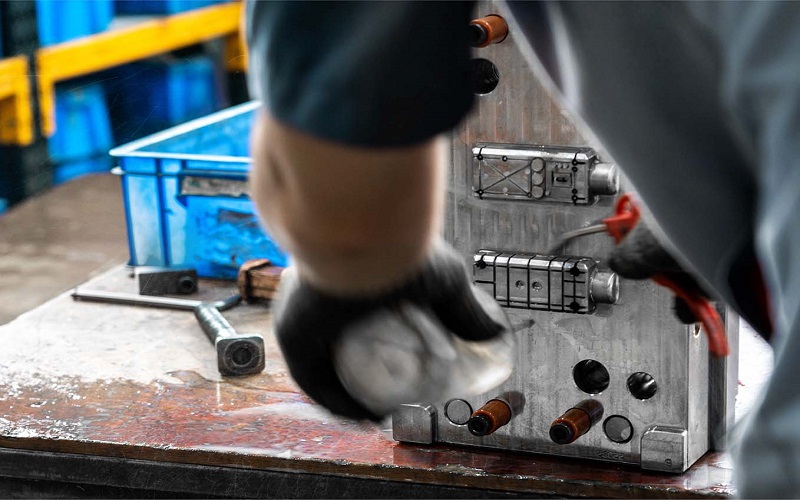
Assembly and Testing
With the mold complete, it’s mounted onto an injection molding machine for testing. The selected plastic resin is heated to a molten state and injected into the production mold under pressure.
Initial test shots produce a small batch of prototype injection molded part, typically 10–50, depending on the injection molding project scope and mold production. This process is essential in production molding.
This stage evaluates the mold’s performance and the parts’ quality, checking for defects like sink marks, flash (excess plastic), or incomplete fills.
Process parameters—such as injection pressure, temperature, and cooling time—are adjusted to optimize results. The goal is to replicate production conditions as closely as possible while identifying any design or mold flaws that need correction.
Applications of Prototype Injection Mold
Prototype injection molds are crucial across various industries like aerospace, medical devices, consumer electronics, and automotive for production quality parts.
These molds enable rapid design iterations and testing, significantly reducing the time and cost associated with bringing products to market.
Rapid prototyping and validation with prototype injection molds enhance product development across multiple industries, ensuring high precision and compliance with industry standards.
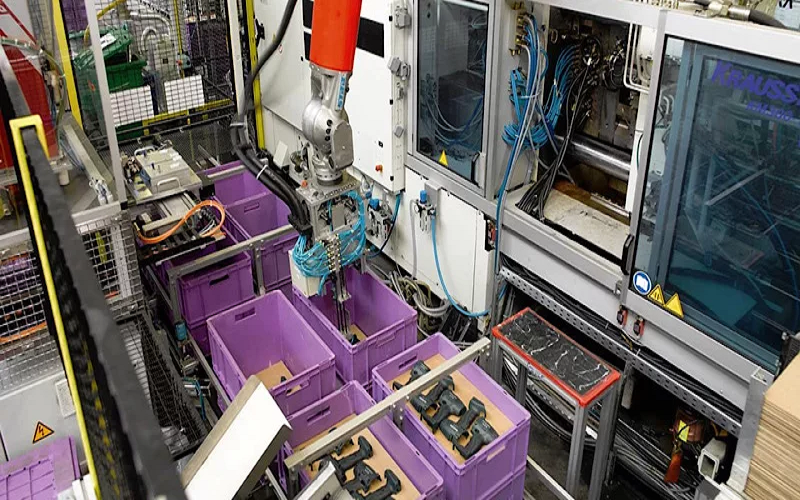
Medical Devices
Prototype injection molds are instrumental in the development of medical devices, ensuring compliance with stringent regulatory standards and high-performance requirements.
Depending on the specific testing needs, some prototypes may mimic particular functions, while others can be fully functional.
For instance, PEEK, an engineering plastic used in some medical devices, is known for its durability and high-performance characteristics but comes with higher costs and minimum order quantities, making its use in prototyping critical for cost considerations.
Consumer Electronics
In the fast-paced consumer electronics industry, prototype injection molds play a pivotal role by enabling quick design changes and iterations necessary to keep up with market demands.
The ability to swiftly create prototype molds allows companies to test new designs and features faster than traditional manufacturing methods. This rapid iteration ensures that any design flaws can be corrected early, significantly shortening development cycles and reducing costs.
Flexibility in modifying designs and functionalities using prototype molds is a decisive factor for manufacturers aiming to deliver cutting-edge technologies.
Automotive Parts
Prototype injection molds are essential in the automotive industry for creating intricate components that meet both functional and aesthetic requirements.
These molds facilitate the development of complex parts, enhancing performance and design flexibility in vehicles.
Using prototype molds enables the automotive industry to quickly adapt to changing market needs and improve design iterations, significantly accelerating time-to-market for new models and parts. This capability is critical for maintaining competitiveness and innovation in the automotive sector.
Challenges and Solutions in Prototype Injection Molding
While prototype plastic injection molds offer significant advantages in product development, they come with inherent challenges and limitations that must be carefully managed. These challenges include limited lifespan compared to production molds, trade-offs in precision and consistency, and potential cost escalation with multiple iterations.
Limited Lifespan Compared to Production Molds
Prototype plastic injection molds are designed for short-term use, typically producing a few dozen to a few hundred parts, whereas production molds can handle tens of thousands to millions of cycles.
This limited lifespan results from using softer materials like aluminum or mild steel, which wear out faster under the heat and pressure of injection molding compared to the hardened steel used in production molds.
For example, aluminum molds may develop surface wear or deformation after repeated cycles, compromising part quality.
Therefore, prototype molds are unsuitable for anything beyond initial testing or small batches, necessitating a transition to more durable tooling for larger runs, which adds time and cost to the overall process.
Trade-Offs in Precision and Consistency
Unlike production molds, which are engineered for tight tolerances and uniform output, prototype molds often sacrifice precision and consistency for speed and cost savings. Their simpler designs—lacking advanced cooling systems or multi-cavity layouts—can lead to uneven cooling, causing issues like warping, shrinkage, or slight dimensional variations across parts.
For instance, a prototype mold might produce parts that meet basic functional requirements but fall short of the exacting standards needed for final production. While this trade-off is acceptable for testing purposes, it limits the mold’s ability to fully replicate the quality and repeatability expected in mass manufacturing, requiring further refinement in later stages.
Potential Cost Escalation With Multiple Iterations
The iterative nature of prototyping can drive up costs if multiple mold revisions are needed. Each design flaw identified—such as poor part ejection or inadequate material flow—may necessitate adjustments to the mold or even a new mold entirely, especially if major changes to the part geometry are required.
While a single prototype mold is relatively inexpensive (e.g., a few hundred to a few thousand dollars depending on complexity), producing several molds across iterations can erode the initial cost advantage over jumping straight to production tooling.
This risk is heightened in complex projects where unforeseen issues emerge, making budget planning a critical consideration when relying on prototype plastic injection molds.
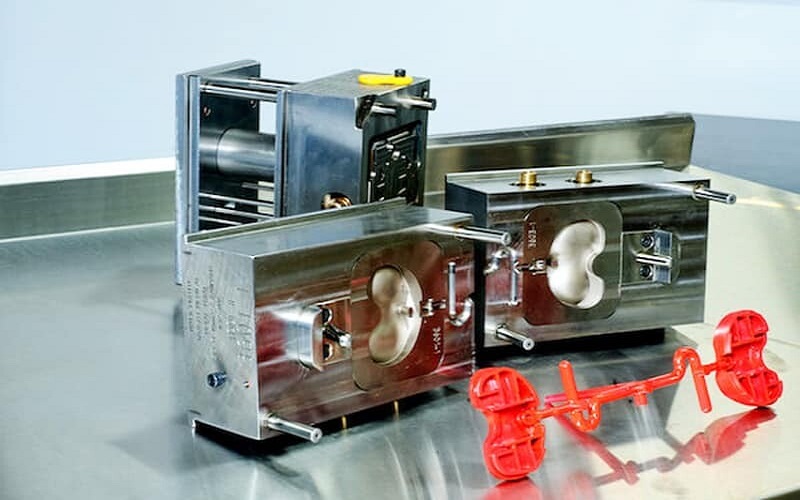
Transitioning from Prototypes to Production
Transitioning from prototype molds to production molds requires detailed planning and effective communication between design and production teams. The goal is to ensure that production molds are optimized for scalability while maintaining the intended features and functionality of the prototypes.
By doing so, manufacturers can identify and address production challenges early, ensuring a smooth transition to full-scale production.
Scaling Up Production
Scaling up production involves creating parts that let you identify production challenges early and using the same production grade materials and process as planned for full-scale production. This approach helps in modifying or re-creating tooling to meet production requirements effectively.
By addressing these challenges early, manufacturers can achieve cost savings, reduce production times, and ensure consistent quality across large production volumes.
Refining Designs for Production
Refining designs for production involves incorporating feedback from prototype testing to make necessary adjustments that improve manufacturability. This process helps in identifying potential manufacturing issues before full-scale production starts, ensuring that the final product is both functional and cost-effective.
By bridging the gap between initial prototypes and validating products for full production runs, prototype molding services play a crucial role in the product development cycle.
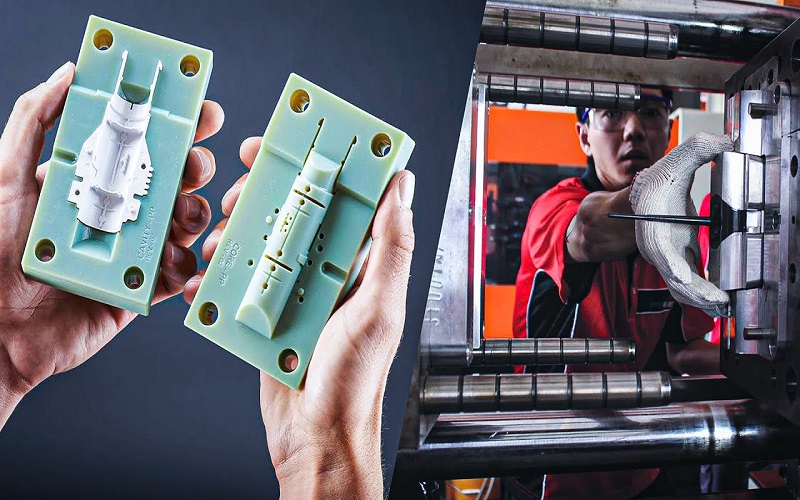
Summary
Prototype plastic injection molds are indispensable tools in modern manufacturing, providing a cost-effective and efficient way to test and refine product designs before full-scale production.
By enabling early detection of design flaws, reducing initial production costs, and shortening time-to-market, these molds play a crucial role in bringing innovative products to market quickly and efficiently.
Despite the challenges associated with prototype injection molding, such as limited lifespan and potential cost escalation with multiple iterations, the benefits far outweigh the drawbacks.
By understanding the process and effectively transitioning from prototypes to production, manufacturers can achieve high-quality, scalable production while maintaining the flexibility to adapt to evolving market demands.
